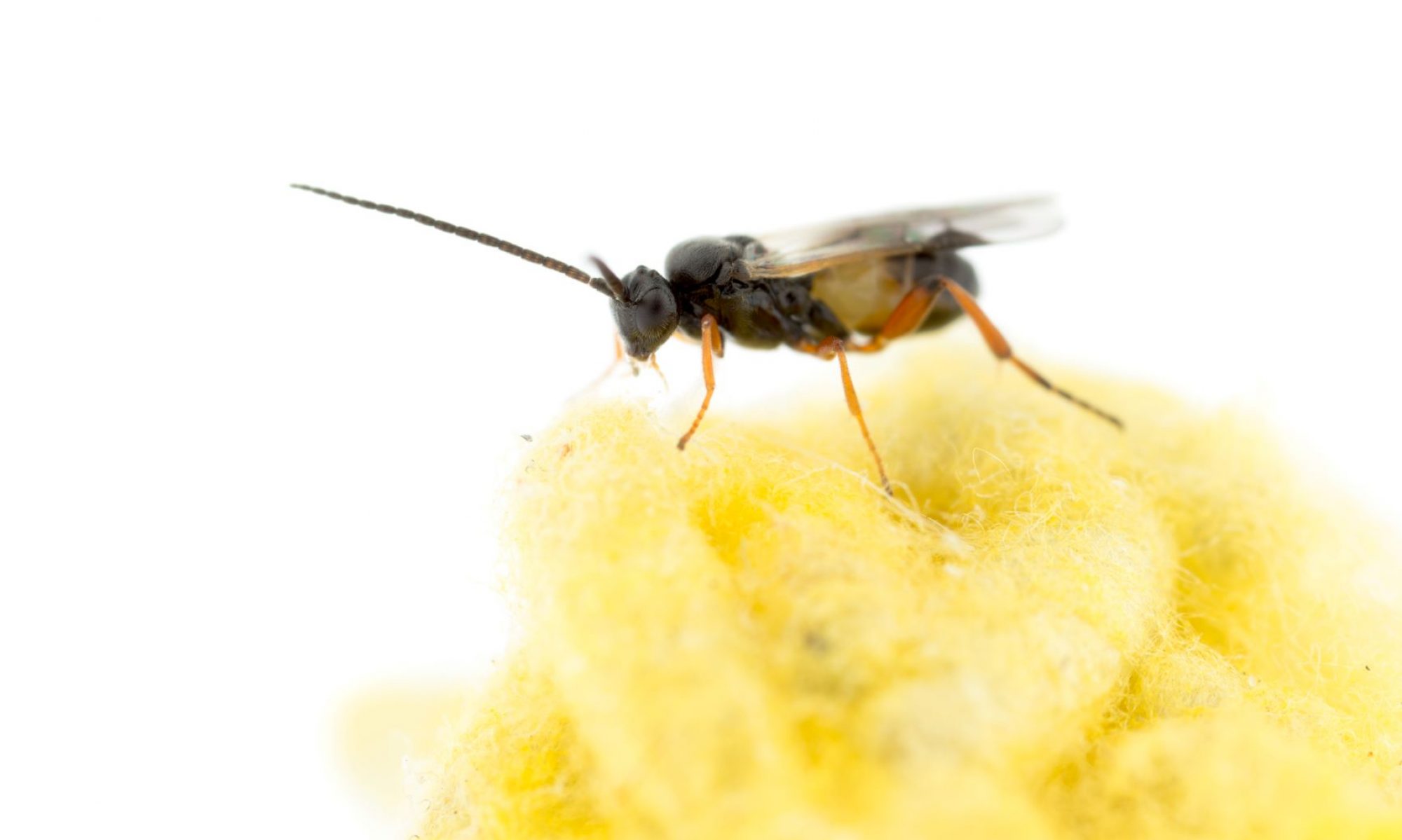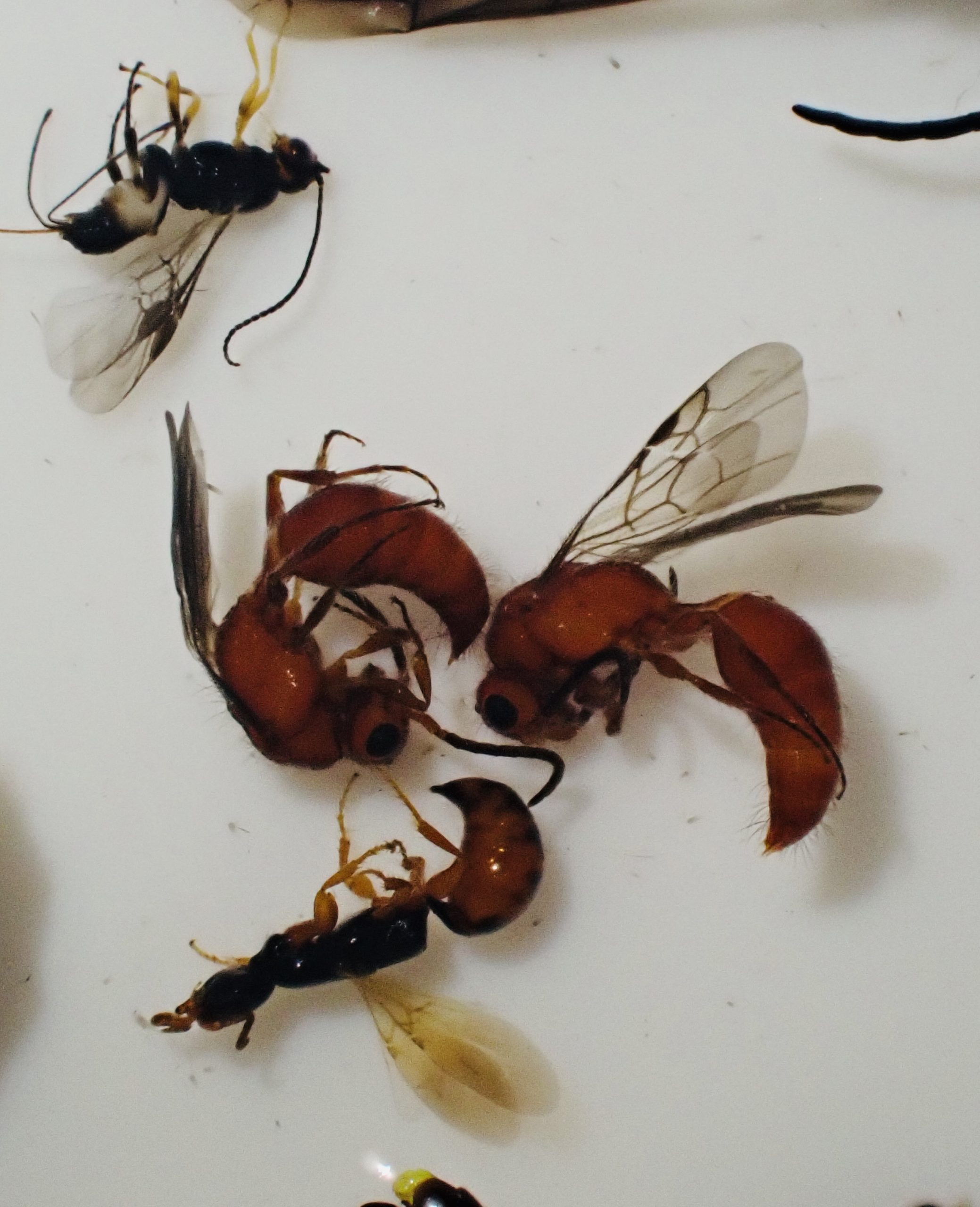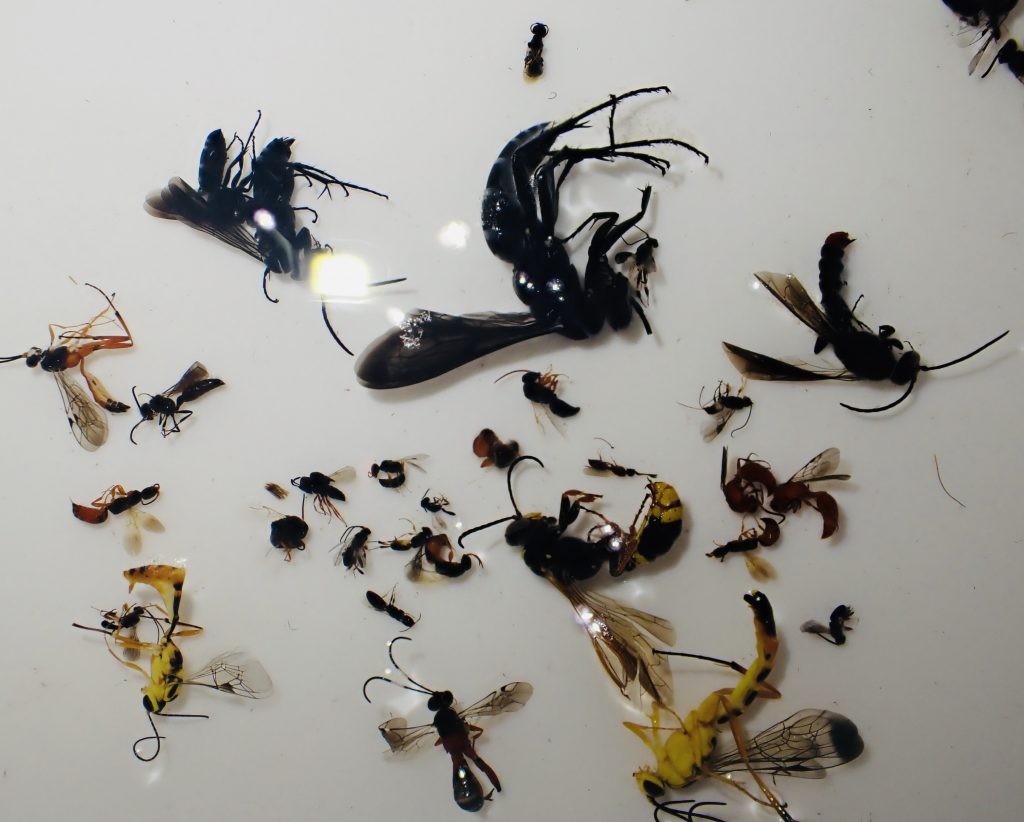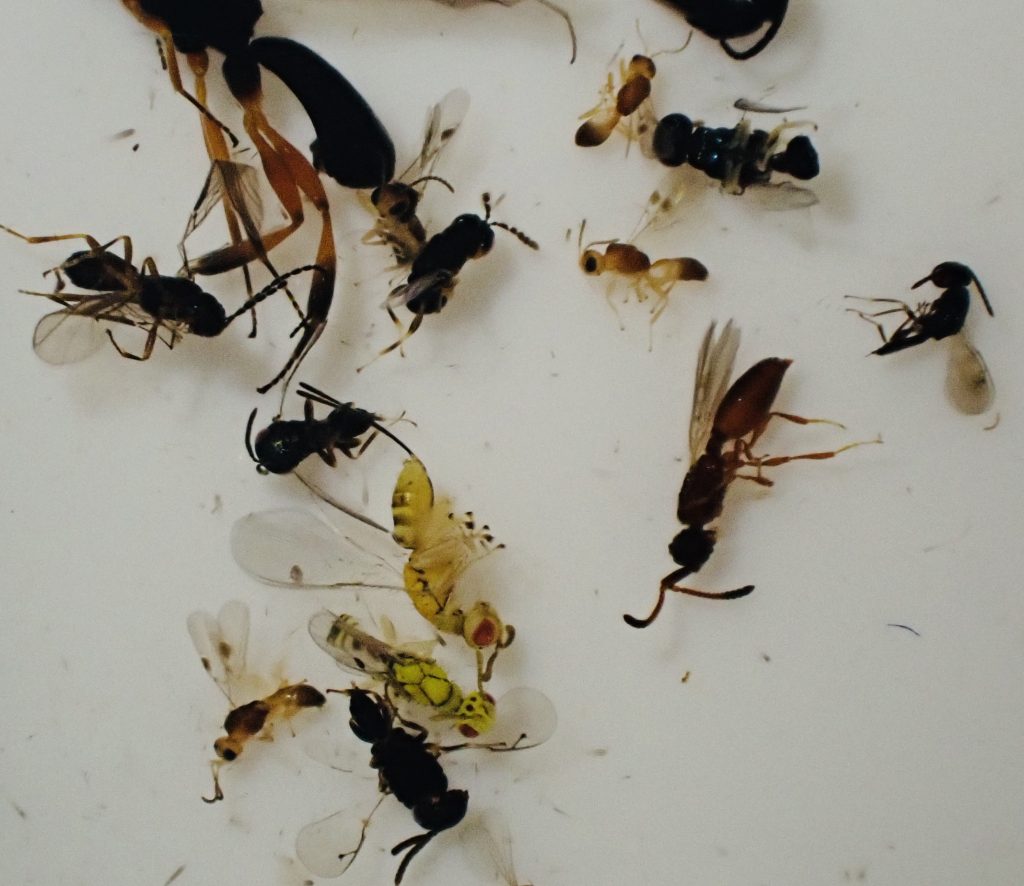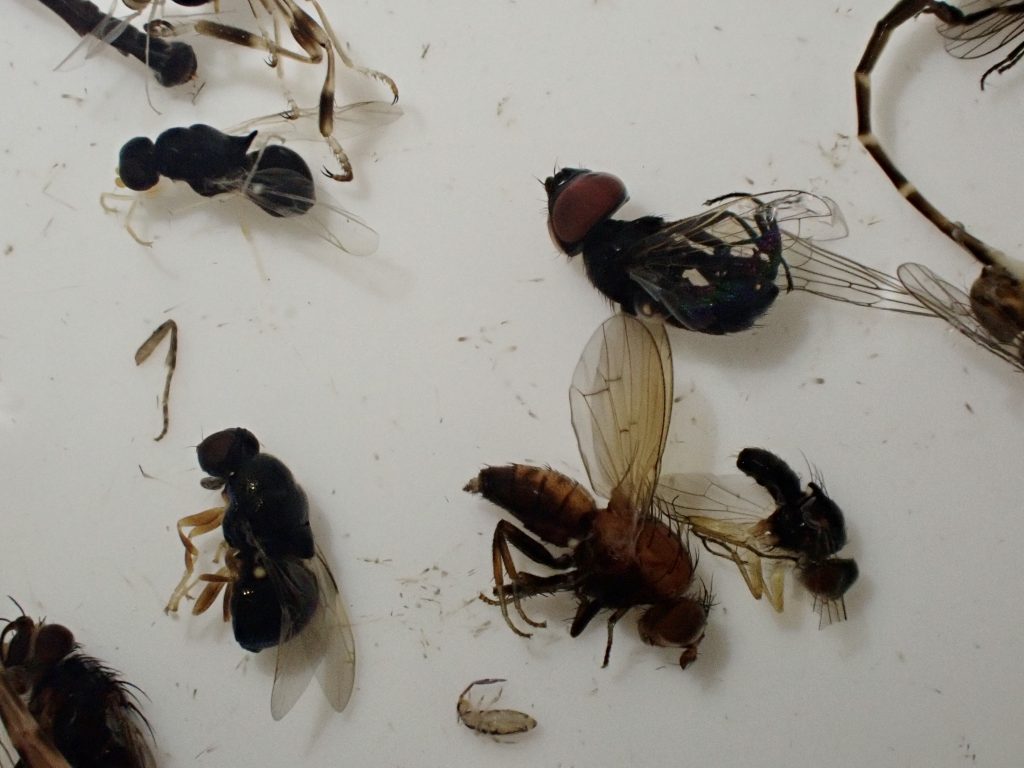Hi students and community at Ramco! I have just sorted another of your trap samples, this one was up from the 17-31 March. There were less insects in there than the first two samples – perhaps because the weather was a little cooler? We will find as the temperatures start to drop through Autumn that there are less insects in the trap – this is normal! Most insects need warmth from the sun to fly, so as the warm sunny parts of the days get shorter, there will be less insects flying around and therefore less insects in the trap.
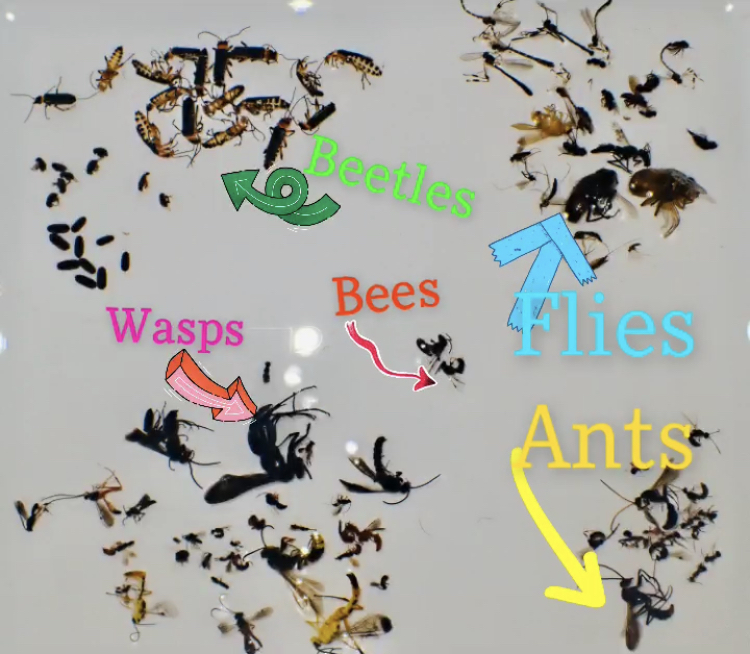
The picture above is just before I started picking out all the really tiny things from the trap – I wanted to try and capture just how many different sorts of insects you are catching! How many different species do you think there are in this photo? My guess would be at least 50! By the time I put all the teeny tiny wasps and flies in, you would have caught at least a couple hundred different species of insect. So even if the traps are not looking very full, there are so many different things in there – and all of these different insects are living in the environment at your school!

I wanted to start by showing you these very cool wasps – these are called Velvet Ants (even though they’re not ants), or mutillids (as they are in the family Mutillidae). The females are wingless (they are born with no wings) and the male wasps have wings and fly around, whilst the females live on the ground. These wasps parasitise bees, laying their eggs inside bee nests so that their babies can eat the bee larvae. They also have a very painful sting! A colleague of mine at the Australian National Insect Collection in Canberra is studying these wasps, and how different species mimic (copy) each other in their colours and appearance.
Her name is Juanita, and she is wanting to know how well we as humans can tell the difference between species of velvet ant that are mimics of each other. She has made an experiment to see how similar people think different pictures of velvet ants are – and you can play! You can go straight to the experiment and take part online here: http://www.comparevelvetants.com/
Or read more about her work and the study here: https://www.ala.org.au/blogs-news/play-the-mimicry-game-with-australias-velvet-ants/
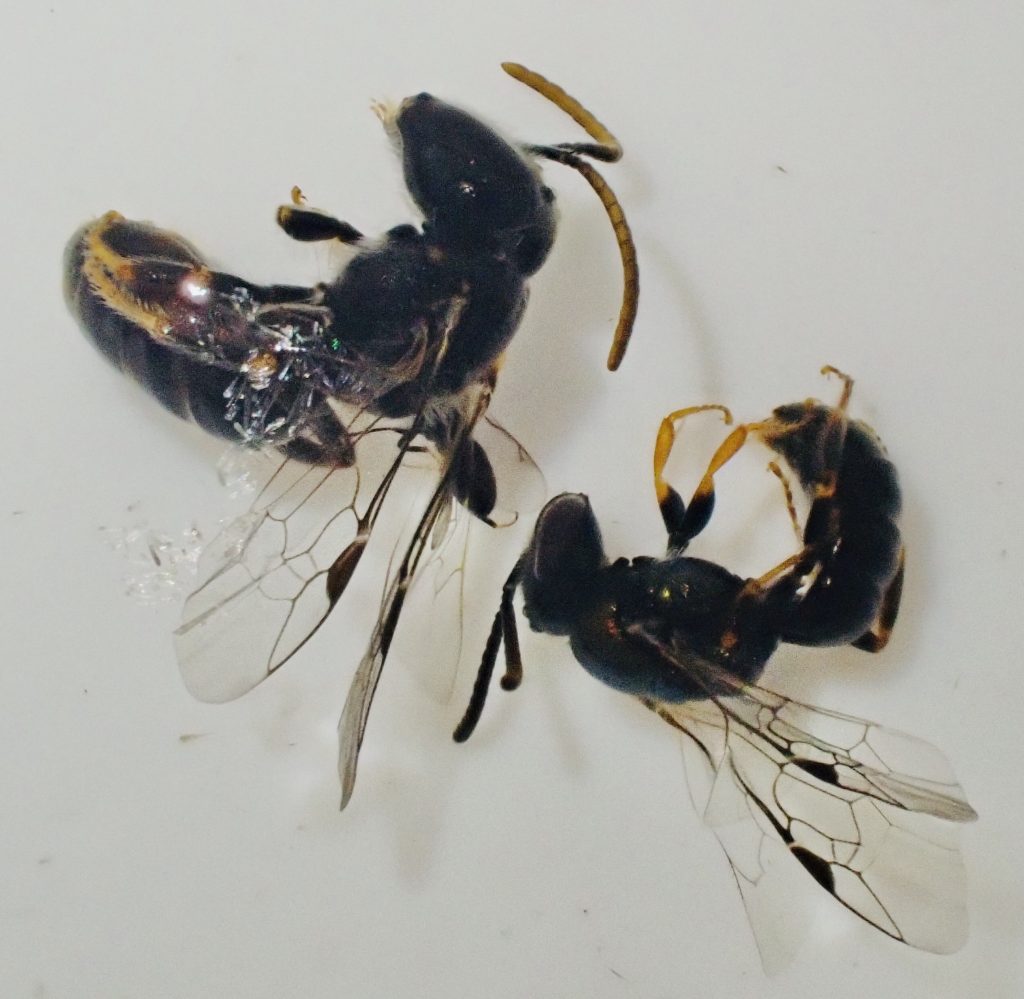
There were two native bees in your trap – my friend James Dorey (who takes beautiful pictures of bees that you can check out on his website) had a quick look at the photo for me and said that the little one is in the subfamily Halictinae, maybe the genus Lasioglossum or Homalictus, whilst the biffer one is in the family Colletidae.
There was another two species of pompilid wasp (the spider hunting ones I wrote about last time), some Ichnuemonidae (the big yellow wasp in the photos) as well as lots of little wasps in the family Braconidae. All of these wasps are parasites of other insects!
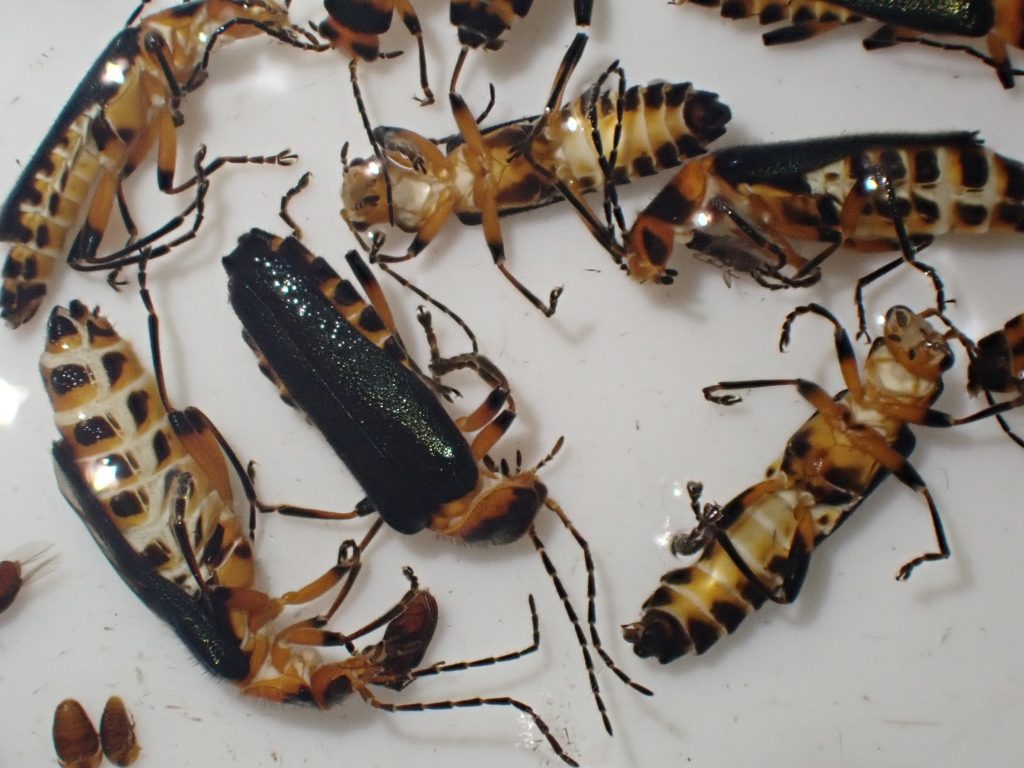
There were several different species of beetle – including quite a few of these ones – I think (I’m not a beetle person!) they are in the family Cantharidae – the soldier beetles.
There were also lots of different flies! All the flies I’ll send off to some fly experts in Canberra – they can hopefully tell us some cool facts about them!
Anyway, I spoke to Ms McPherson today and she told me about the trouble you’ve been having with the trap pole – I’m so sorry it broke so easily! They are a new brand of trap that I wanted to try, but I don’t think they are as sturdy. I will get a new pole in the post to you ASAP!
Thanks again everyone, especially the REG students who are looking after the trap so well. I will try and get the next one sorted quickly!
